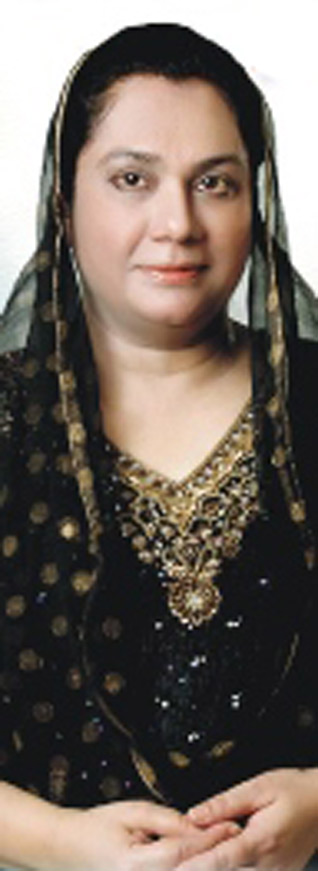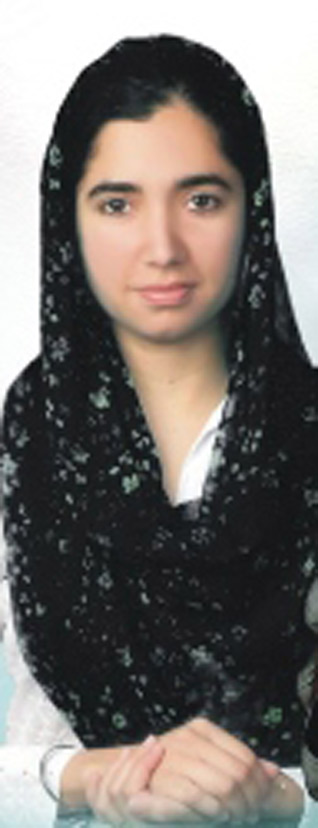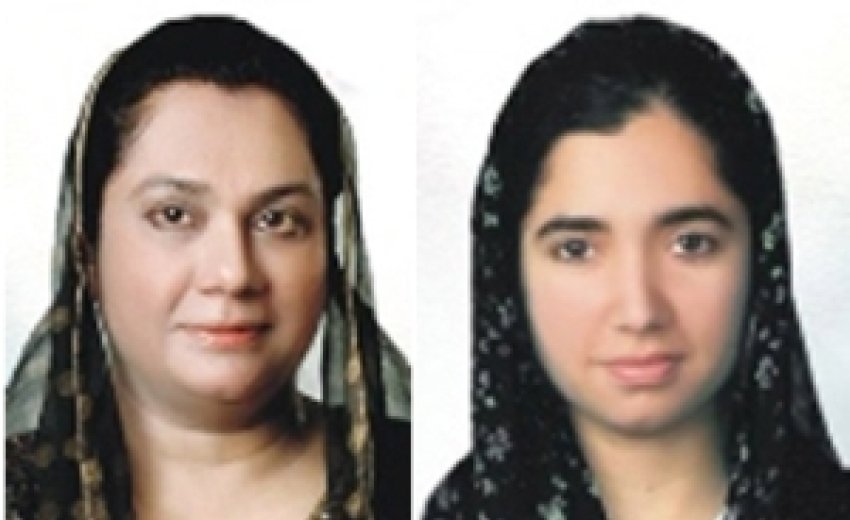|
Gauri raag is auspicious when it induces meditative contemplation of the Lord I first wrote about kirtan these wonderful singers a few years ago. Dr Manbir Singh had forwarded me a link to the Gurmat Gian Group site. On hearing the shabad, “oha prem piri” by the group which had been trained and was led by Gurpreet Kaur, I became deeply interested in this remarkable initiative from Ludhiana, Punjab. More so on reading about the classical kirtan background of Gurpreet Kaur, daughter of a Brigadier surgeon, himself an accomplished classical kirtainia. Gurpreet is the wife of Dr Manbir Singh who runs a hospital at Raikot in district Ludhiana, and is the co-ordinator of the group at Gurmat Gian Missionary College, Ludhiana. In the recordings, the deep spirituality of the ardaas is felt in shabads like "hey sansaar taap harnay" (GGS:1358) as the angelic voices sing in perfect harmony to effortless changes in taal (beat). This was also the time when the ongoing debate about kirtan by women jathas at Darbar Sahib had heated up once again. Despite some outstanding exceptions, traditional kirtan rassias (meditative listeners) remain unimpressed by the poor quality of most all-male jathas who are not conversant with classical raags, and are untrained in the art of singing to traditional string instruments (taanti saaj). After producing a number of group audio CDs, Gurpreet accomplished a challenging classical kitan project by recording 31 shudh raags of Guru Granth Sahib as a 6-CD set, “Raag Ratan”. She was accompanied by her daughter, Keerat Kaur in this project. To my knowledge, this was the first such project by recording by an all women jatha. Next in line was an even more ambitious project: the recording of different Gauri raag combinations with other raags. This project has now been completed as “Gauri Sagar,” – a 3-CD set by the mother and daughter duo. This is a milestone in the evolution of classical gurbani kirtan which has attracted the attention of acclaimed kirtanias such as Bhai Nirmal Singh. There is more bani in raag Gauri, the third raag in Guru Granth Sahib, than in any other. There are also more raag varieties in Gauri than in any other raag in Guru Granth Sahib. Including the Sudh Gauri, there are 12 forms of the raag. The 11 mixed (mishrit) varieties are : Gauri Bairagan, Gauri Guaraeree , Gauri Chaetee, Gauri Poorbi, , Gauri Deepki, Gauri Poorbi Deepki, Gauri Bhi Sorath Bhi, Gauri Malwa, Gauri Maajh, Gauri Mala, and Gauri Dakhnee. According to Principal Dyal Singh of Gurmat Vidyalay at Gurdwara Rakab Ganj, some raag combinations with Gauri - e.g., Bairagan, Deepki, Maajh, Mala, and Malva - are unique to Guru Granth Sahib, since there is no mention of these in any other Indian classical or music literature. According to Sant Sarwan Singh Gandharb, it is not possible to sing Gauri Raag without extensive training with an ustaad of classical raags. In its exposition, it is important to distinguish Gauri from Bhairo, as the notes of Gauri are the same as those of raag Bhairo. When singing, it is difficult to separate these two raags. In addition, Kalingra raag is also hovering in the vicinity. On first listening to “Gauri Sagar”, I felt that some appreciation of the technical aspects would be of some help. In notes higher than “pa” (pancham) of madh saptak (middle octave), “there is a danger of raag Kalingra embracing it”! There is much controversy about Shudh Gauri as well. Gauri is best enjoyed up to “pa” note of madh saptak with continual stress on “ni” of mandar saptak (lower octave). The raag belongs to the Bhairo mainstream (tthaath) sung in the morning. As is usual with raag schools, there is some controversy about the stress notes (vaadi and samvadi), some opting for “ma” (madham) as the main key with “sa” (sharaj) as the supporting key. Others opt for “ray” (rishab) and “pa” (pancham) combination. Gurpreet Kaur has some reservations about the suggestion that there is need to know the basics of raags to appreciate the shabads. She writes: “I feel keeping the basics and intricacies of raags is the duty and work of the kirtanias, while the sangat can simply enjoy the message of the gurbani.” Nevertheless, she did send a guided tour of the depths of "Gauri Sagar.” “These compositions and singing style are a departure from the routine pattern of singing today which is getting dull and monotonous. If we look around, it is not uncommon to find the same monotony of teen taal whenever there is a performance based on raags. We are trying to break this monotony by singing in various, not so common, taals and presenting raag-based kirtan in various shayees like dhrupad, khayal and thumari ... In Gauri Sagar, we have used taals like: Matta (9), Sool taal (10), Shikhar taal (17), Rudra taal (11), along with Roopak, Keharva, and Teen taal. "As in the first shabad of CD1 ‘Bin Bhagavant Naahee An Koae,’ a combination of Matta (9) & Keharava (8) is used, which is a very rare combination and to my knowledge hardly ever used.” I used to joke about “mishrit raags” with Dya Singh of Australia, treating most of his “world music” tunes as “mishrit raags”! But no longer, after reading the following, also supported by those like Sarwan Singh. Gurpreet Kaur continues: “A major difference between Sudh raags of raag Ratan and the Mishrit raags of Gauri Sagar is that these mishrit raags are tougher and difficult raags and to compose in these raags is always a challenge. Like, for example Raag Gauri Poorbi Deepki in CD1, the 5th shabad, which is a combination of three raags - Gauri, Poorbi and Deepki. "The shabad in the raag is ‘tum gaavoh maerae nirbhao ka sohila.’ Now, the composition for this shabad had to be made very simple for singing as this shabad is on the lips of everybody. For this shabad we used pakhavaj (small drum) at 8 beats to give the feel of singing in older times when pakhavaj was used, and by mixing pakhavaj with contemporary music, it also gives a feel of a new style.” The mystery of the shabad “tum gaavoh ..." being sung twice is thus solved. The shabad appears in the Guru Granth at two places - pages 12 and 157 - with minor differences, under different raags: Gauri Deepki and Gauri Poorbi Deepki. In the 3rd CD, the last shabad, ‘tum gaavoh ..." is in Gauri Deepki. It has been sung in Shikhar Taal (17) beats, an uncommon beat. “Gauri Sagar” is recommended for the more mature listener of classical gurbani kirtan. Nevertheless, the average listener is moved by some shabads like “dukh bhanjan tera naam ji” in raag Gauri Maajh. I feel that some distracting repetition and what seemed like unnecessary protraction of shabads could have been avoided to make the listening experience even more enjoyable. Nevertheless, there is much here for the dedicated student listeners of classical kirtan. My own interest in this Group has two aspects. Firstly, the male-biased kirtan politics which keeps women kirtanias out of Darbar Sahib. With an increasing number of accomplished Sikh women kirtanias, there should be no excuse for excluding them from doing kirtan seva within the Harmandar. Secondly, singing, poetry and art are important qualifications for the proverbial “batees sulakhni” role of a successful spouse within a family. I believe that for the enrichment and progress of Sikh religio-cultural heritage, our children, especially from middle and upper socio-economic backgrounds, should take up classical kirtan for developing more rounded personalities, and as a good investment for married life and parenthood. We get glimpses of such roles in our cultural traditions and heritage. By recording 31 shudh raags of the Guru Granth, such as raag Ratan and raag Gauri, with its 11 mixed varieties in “Gauri Sagar”, Gurpreet Kaur and her gifted daughter, Keerat Kaur, have already secured a place of honour in the gurbani kirtan tradition. Keerat Kaur is now married and lives in America and receives the sangat’s blessings by doing kirtan at a local gurdwara in Atlanta. Gurpreet Kaur's kirtan-teaching seva at Gurmat Gian Missionary College continues and is much appreciated. We look forward to more kirtan recordings with her students in the near future. |
  |

